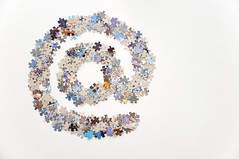Even in these days of RSS, Twitter, Facebook, and social media, the “old-fashioned” email newsletter is still a reliable way to connect with your readers, build your tribe, and sell your products.
In order to do that, you’ll need to follow these five essential steps.
1) Reflect your brand
Put your logo on it. Or your smiling face. Use the company colors. I like to keep mine fairly simple (so that it’s readable both on phones and computers), just my face, the copy, and some HTML links. This also helps keep it out of spam filters.
2) Short copy
One or two “screen scrolls” should do it. Don’t write five printed out pages of text. It’s too hard to read. Keep it short, personal, and chatty. My newsletters are about two paragraphs (plus links back to the blog and an occasional P.S.). Quick, short, and easy-to-digest.
3) Minimal Images
Too many places to look gets confusing. Readers are drawn to images — too many and they don’t know where to look first. This can also be another spam trigger. Keep the layout linear – don’t jump all over the place – it’s too hard to follow.
4) Consistent calls to action
Hold off on the call to action until you’ve explained the benefits of whatever you want the reader to do. Some need more information than others, but don’t make it the first or second sentence. Click here now (why? I don’t know what I’m getting into yet). Keep the call to action consistent – use the same wording and anchor text (the text that shows up in the link rather than the url).
5) Answer readers’ questions
Think about what concerns your readers may have. Are they worried about the price? The quality? Getting a refund if something goes wrong? That the product will be hard to use? If they worry about price, point out what a great value it is. If they’re concerned they won’t be happy, emphasize your great guarantee. If they think it’s hard, include testimonials from happy customers showing how easy it is to use.

